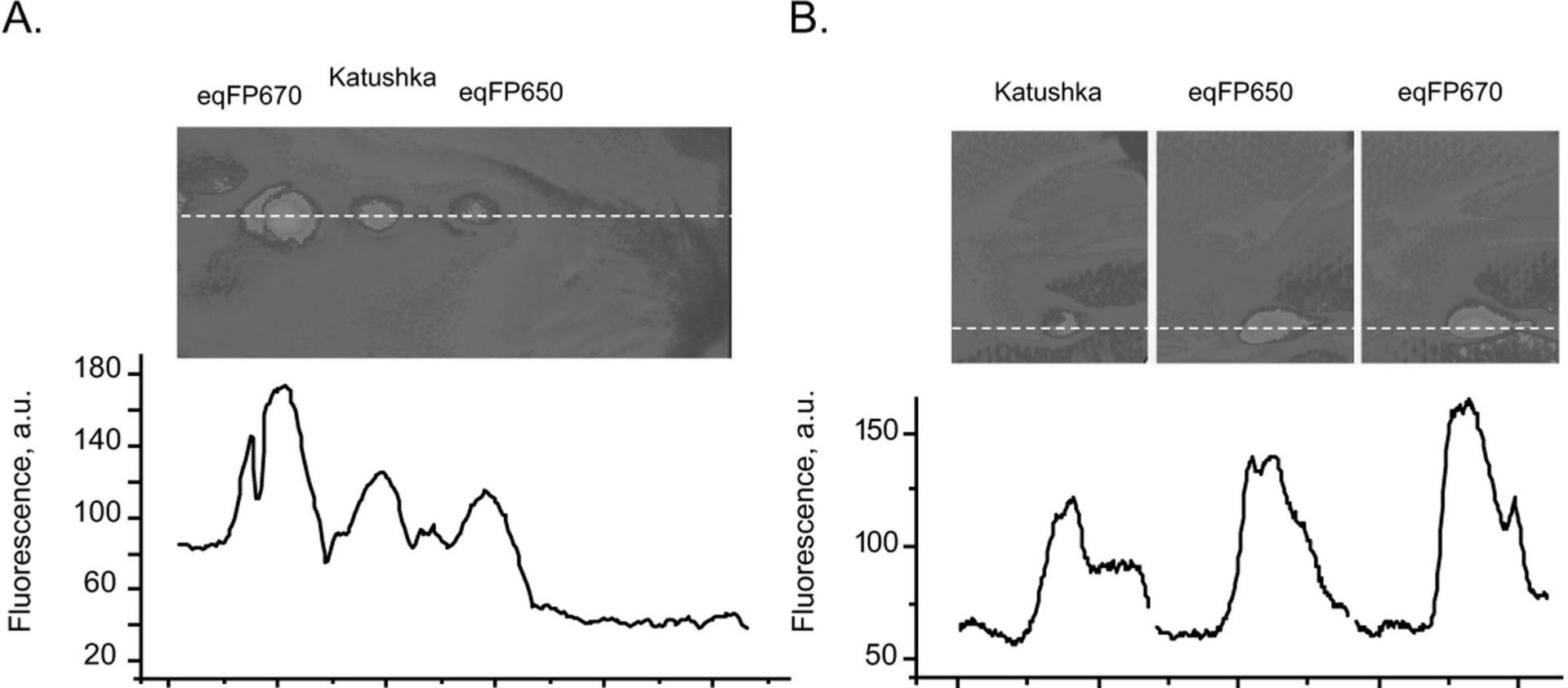The color palette of obtained to date GFP-like fluorescent proteins (FPs) covers almost whole visible range of the spectrum. However there is lack of bright and photostable FPs in the far-red and infra-red sections where living tissues are more transparent due to low absorbance and light-scattering levels. The development of such genetically encoded far- and infra-red fluorescent markers is highly demanded and will open new opportunities for whole-body imaging techniques. We recently elaborated bright far-red fluorescent protein Katushka(1) (λex/λem = 588/635 nm). Its improved variant Katushka-9-5 with reduced cell toxicity was selected for the development of FPs with further far-red shifted wavelengths. Based on the analysis of the crystal structure of the related far-red FP mKate(2) a number of selected amino acid positions of the chromophore environment of Katushka-9-5 were subjected to semi-saturated site-directed mutagenesis in combination with random mutagenesis. After more than a million of individual colonies were screened we finally selected two FP variants, named eqFP650 and eqFP670, with fluorescence emission maxima peaked at 650 and 670 nm, respectively. It was demonstrated that EqFP650 retained high fluorescence brightness of the preceding Katushka-9-5 thus being the brightest far-red FP with fluorescence emission maximum above 635 nm (λex/λem = 592/650 nm). EqFP670 was characterized by lower fluorescence brightness but stronger batochromic shift of both excitation and emission maxima (λex/λem = 605/670 nm). Thus EqFP670 is the first GFP-like FP with near infra-red fluorescence emission. Importantly it can be exited by standard 633- or 635-nm laser line that makes it a remarkably useful tool in both whole-body imaging and flow cytometry techniques. To investigate the penetration of the fluorescent signal of eqFP650 and eqFP670 through animal tissues we performed subcutaneous (2 mm depth) and intramuscular (5 mm depth) injections of Katushka, eqFP650 or eqFP670 protein samples into living mice. The fluorescence was excited with 635 nm photodiodes and emission was measured over the integrated 700-900 nm range. It was demonstrated that eqFP670 exhibited the highest infra-red fluorescent signal in both injection experiments (Fig. 1). The comparison in living tissues demonstrated advantageous characteristics of eqFP650 in the far-red and eqFP670 in the infra-red parts of the spectrum. The developed FPs possess the potential to increase the sensitivity of whole-body imaging techniques and can also become useful tools for multicolor labelling experiments.
University of Manchester (2010) Proc Physiol Soc 19, PC84
Poster Communications: Novel far-red and near infra-red fluorescent proteins
E. Souslova1, D. Shcherbo1, I. Shemiakina1, K. Lukyanov1, D. Chudakov1
1. IBCH RAS, Moscow, Russian Federation.
View other abstracts by:
Figure 1. Whole-body imaging of subcutaneous (A) and intramuscular (B) injections of Katushka, eqFP650 and eqFP670 into living mice.
Where applicable, experiments conform with Society ethical requirements.

